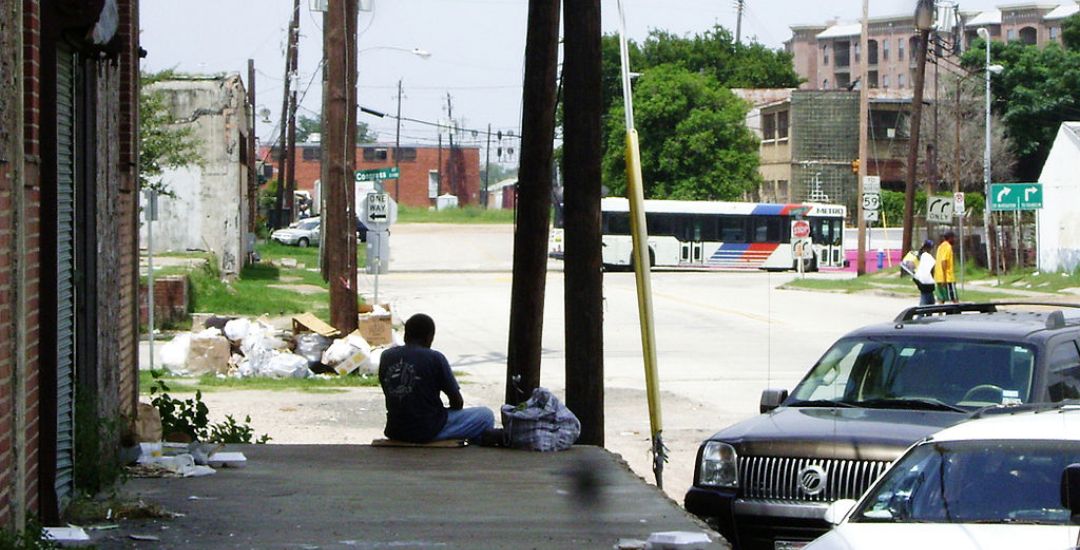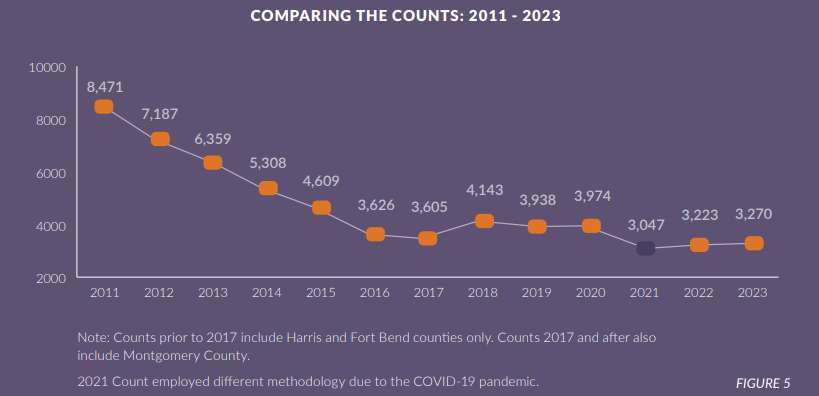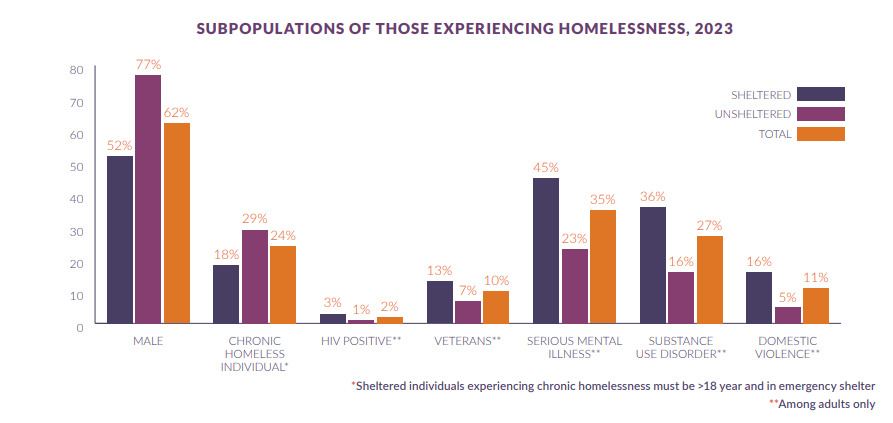The Point-in-Time Homeless Count & Survey, conducted in January, found a total of 3,270 people experiencing homelessness in Harris, Fort Bend and Montgomery counties, which make up the coalition’s continuum of care. Of those accounted for, 2,028 people were considered sheltered and 1,242 were not. The overall number represents a 1% increase over last year, but a 17% decrease in unsheltered people.
This does not represent a comprehensive accounting of every homeless person in the three-county area — 3,711 square miles — the coalition has to cover. Rather, it is used to determine if services and housing are sufficient enough to meet the needs of homeless people.
“It’s just one fraction of the information that we use to gauge homelessness in our continuum of care,” said Ana Rausch, vice president of program operations for the Coalition for the Homeless of Houston/Harris County. “We want to make sure that we are reporting an accurate number. We have to do it because of HUD, but we want to do it. We want to know how well we’re doing or how well we’re not doing. It determines our progress, and it helps determine the amount of federal, state and local dollars that are coming into our system.”
Courtesy of the Coalition for the Homeless of Houston/Harris County
Through the point-in-time count, the coalition has reported a 61% decrease in homelessness since 2011. It focuses on two definitions of homelessness and one subset. The first is sheltered homeless, which means a person who is living in an emergency shelter, transitional housing or a safe haven. A safe haven is defined by HUD as, “a form of supportive housing that serves hard-to-reach homeless persons with severe mental illness who are on the street and have been unable or unwilling to participate in supportive services.”
The second definition is unsheltered homelessness, which includes people dwelling in places not meant for human habitation — abandoned or dilapidated buildings, the outdoors or a vehicle.
The coalition attributed the increase in sheltered homelessness to the relaxation of pandemic restrictions on maximum shelter bed occupancy, and shelter occupancy returning to pre-pandemic levels, and also investments from Harris County, the City of Houston and private philanthropy. One of those investments is the city’s recently-opened housing navigation center, operated by the coalition’s nonprofit partner, Harmony House.
In addition to these categories, the coalition is closely watching chronic homelessness — individuals who have been homeless for a year or more, and have a disabling condition that prevents them from living or working independently. Despite accounting for 24% of those counted this year, up from 20% last year, officials are optimistic this need is being addressed.
“We are very close to ending chronic homelessness,” Rausch said. “Any that are encountered during the homeless count, if there is a trained coordinated access assessor on that team they will conduct a coordinated access assessment that will put that individual in our system and on the path towards housing.”
Courtesy of the Coalition for the Homeless of Houston/Harris County
Among the subpopulations experiencing homelessness, 62% were men, 35% of adult individuals reported having a serious mental illness and 27% of adult individuals said they had substance abuse disorder. Individuals identifying as Black or African-American were disproportionately represented, making up 55% of the total population experiencing homelessness, but only 20% of the population in the three-county area.
The primary cause of homelessness among the unsheltered population was economic impacts, making up 33% of the count. The second-leading cause was domestic reasons, with 21% of respondents citing a family conflict. With soaring eviction rates in Harris County, 7% of individuals said it was their primary cause for homelessness.
Homelessness efforts in Houston gained international and national traction in the New York Times article, “How Houston Moved 25,000 People From the Streets Into Homes of Their Own” by Michael Kimmelman. To Kimmelman, Houston’s homelessness strategy has been successful in part because of a willingness by government agencies, businesses, charities and other local service providers to collaborate.
“Homelessness is a systemic problem that demands a systemic approach,” Kimmelman said. “Houston’s system works because the whole subsumes individual contributions into a larger, collective and more effective endeavor. The sum is greater than the parts.”
Houston has been able to reduce homelessness, while other cities have struggled. Phoenix's Maricopa County, among the fastest growing counties in the country alongside Harris County, reported 9,642 people experiencing homelessness in its January point-in-time count—a 72% increase since 2017. In 2022, Los Angeles had a staggering 54,469 people without housing, according to HUD’s annual point-in-time count report.
The keynote speaker during the coalition’s State of Homelessness event April 27, Kimmelman said it is imperative for cities to not give in to hopelessness, indifference or dehumanization toward homelessness.
“What I wanted to communicate in my story was that Houston, however precarious the progress, proves that homelessness is not intractable,” Kimmelman said. “That while we will never eliminate it entirely, because people will always fall into homelessness for a variety of reasons, we can make homelessness increasingly rare and brief, to borrow Roseanne Hagerty’s phrase. … Houston gives people hope that homelessness is a problem we can tackle together.”




